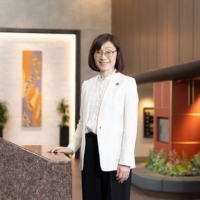More than 50 years have passed since Tokyo Tower was constructed in a more optimistic time, when Japan was recovering from the war years and entering a period of high economic growth. Unimaginatively modeled after the Eiffel Tower in Paris, it was the tallest free-standing tower in the world at its opening in October 1958 and soon became the symbol of Tokyo. Now, much like the Empire State Building in New York or the Eiffel Tower itself, it has a certain retro charm, attracting some 3 million visitors a year.
Tokyo Tower was built as a broadcast tower for television, then in its infancy. However, with the approaching switch to digital broadcasting — and the rise of various skyscrapers in its vicinity — Tokyo Tower will no longer be able to broadcast to the entire Tokyo area. Instead, terrestrial digital broadcasting will be taken over by a new tower, Sky Tree, going up in northeastern Tokyo, not far from Asakusa. Scheduled to be completed at the end of next year and open to the public in the spring of 2012, Sky Tree has passed Tokyo Tower to become the tallest structure in Japan and is already something of a tourist attraction, especially for amateur photographers.
Perhaps reflecting its shitamachi surroundings, the sleek modernity of Sky Tower's metallic profile includes a nod to Japan's past. Its design, triangular at the base and cylindrical above, was inspired by the traditional five-story wooden pagoda, and the final height of 634 meters pays homage to ancient Musashi province (now Tokyo Prefecture and parts of Saitama and Kanagawa prefectures), as the figures 6-3-4 can also be read mu-sa-shi.

















With your current subscription plan you can comment on stories. However, before writing your first comment, please create a display name in the Profile section of your subscriber account page.